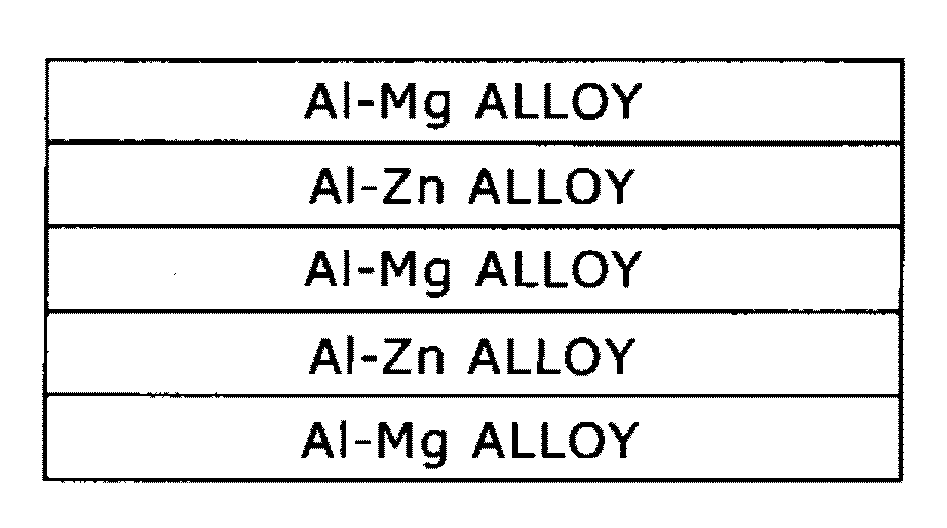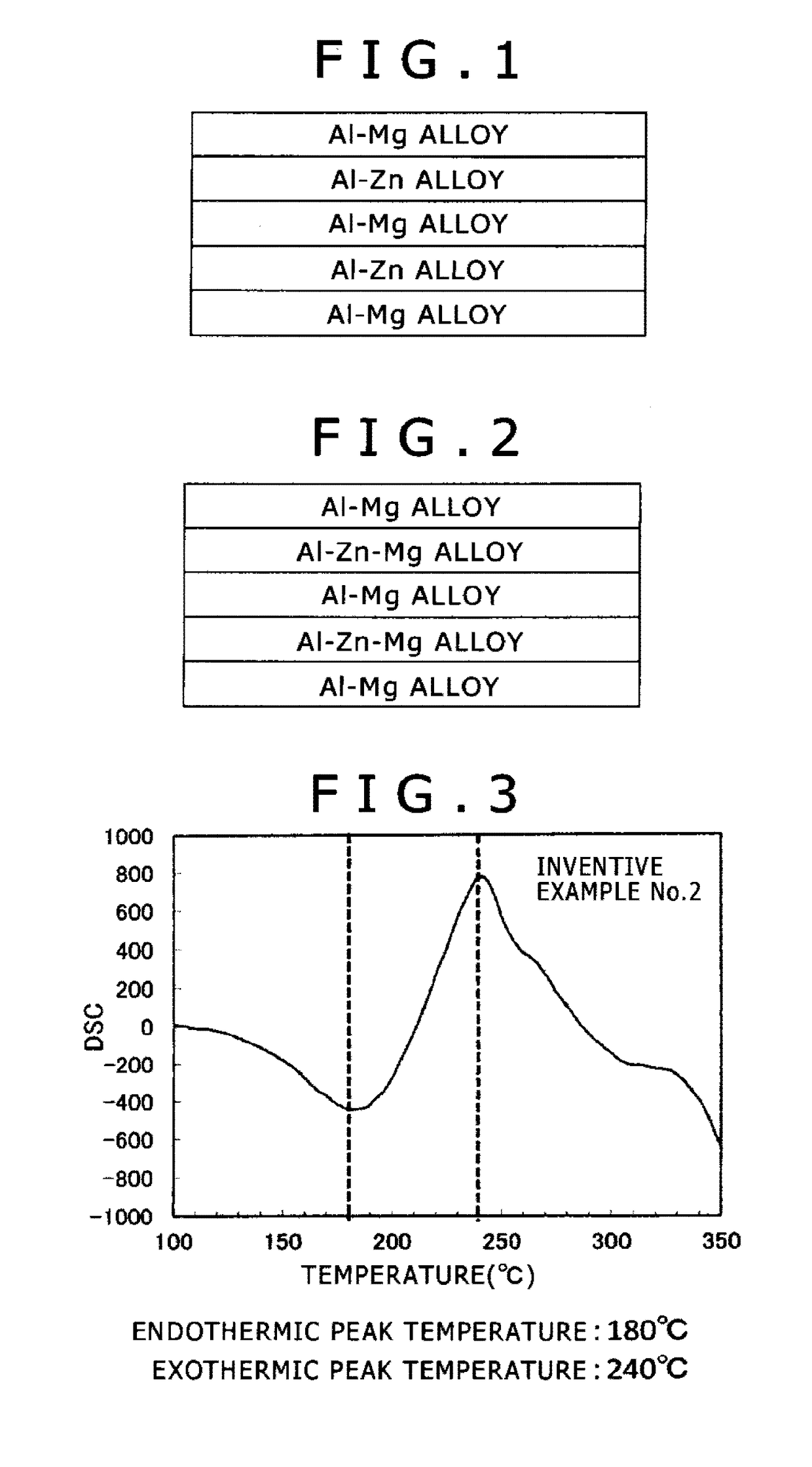Aluminum-alloy-clad plate and aluminum-alloy-clad structural member
a technology of aluminum alloy and clad plate, which is applied in the field of aluminum alloy clad plate and aluminum alloy clad structural member, can solve the problems of reducing ductility, reducing high alloying for high strength tend to contradict formability into the structural member, so as to achieve good formability, increase the ductility of the material clad plate, and high strength
- Summary
- Abstract
- Description
- Claims
- Application Information
AI Technical Summary
Benefits of technology
Problems solved by technology
Method used
Image
Examples
example
[0115]The present invention is now described in detail with Example.
[0116]Aluminum alloy clad plates shown in Tables 1 and 2 were manufactured, in each of which various aluminum alloy layers were laminated and subjected to the specific T6 treatment to simulate the clad structural member.
[0117]With a microstructure of each of the aluminum alloy clad plates, average grain size (pm) as an average of grain sizes of the laminated aluminum alloy layers, presence of the Mg—Zn interdiffusion region, in which Mg and Zn interdiffused between the laminated aluminum alloy layers, and the endothermic peak position (° C.) and the exothermic peak position (° C.) on the DSC were measured.
[0118]Furthermore, mechanical properties and BH properties of such aluminum alloy clad plates were measured and evaluated.
[0119]Table 2 shows the results.
[0120]The aluminum alloy clad plates were specifically manufactured as follows.
[0121]Aluminum alloy slabs having alloy compositions shown in Table 1 were melted a...
PUM
| Property | Measurement | Unit |
|---|---|---|
| total thickness | aaaaa | aaaaa |
| temperature | aaaaa | aaaaa |
| temperature | aaaaa | aaaaa |
Abstract
Description
Claims
Application Information
 Login to View More
Login to View More - R&D
- Intellectual Property
- Life Sciences
- Materials
- Tech Scout
- Unparalleled Data Quality
- Higher Quality Content
- 60% Fewer Hallucinations
Browse by: Latest US Patents, China's latest patents, Technical Efficacy Thesaurus, Application Domain, Technology Topic, Popular Technical Reports.
© 2025 PatSnap. All rights reserved.Legal|Privacy policy|Modern Slavery Act Transparency Statement|Sitemap|About US| Contact US: help@patsnap.com



